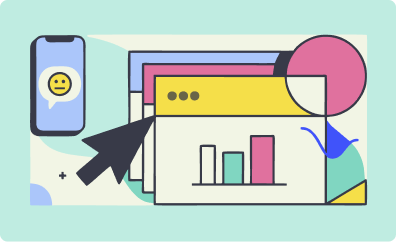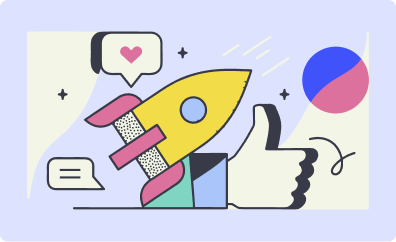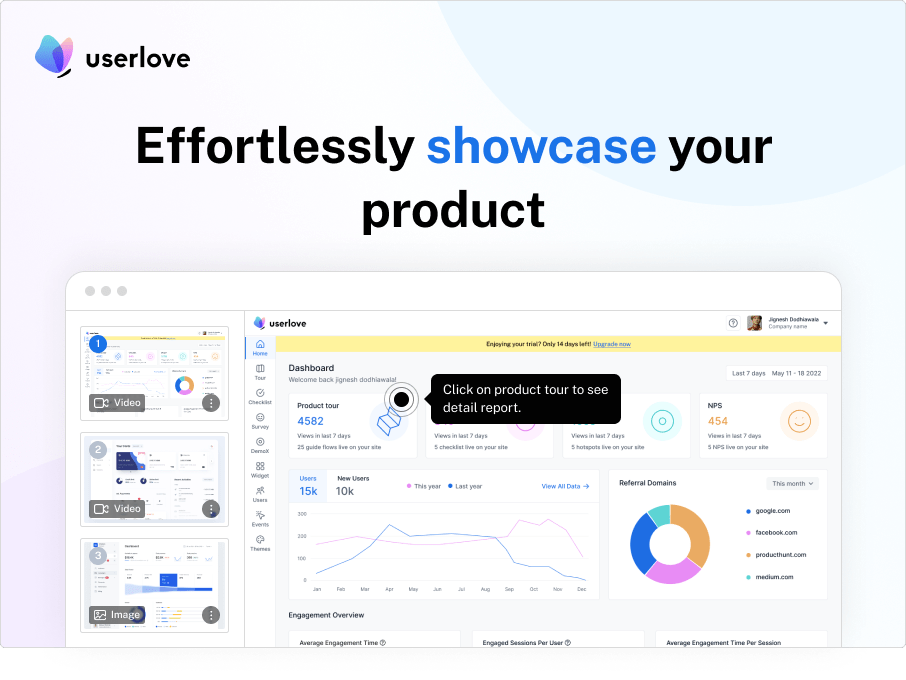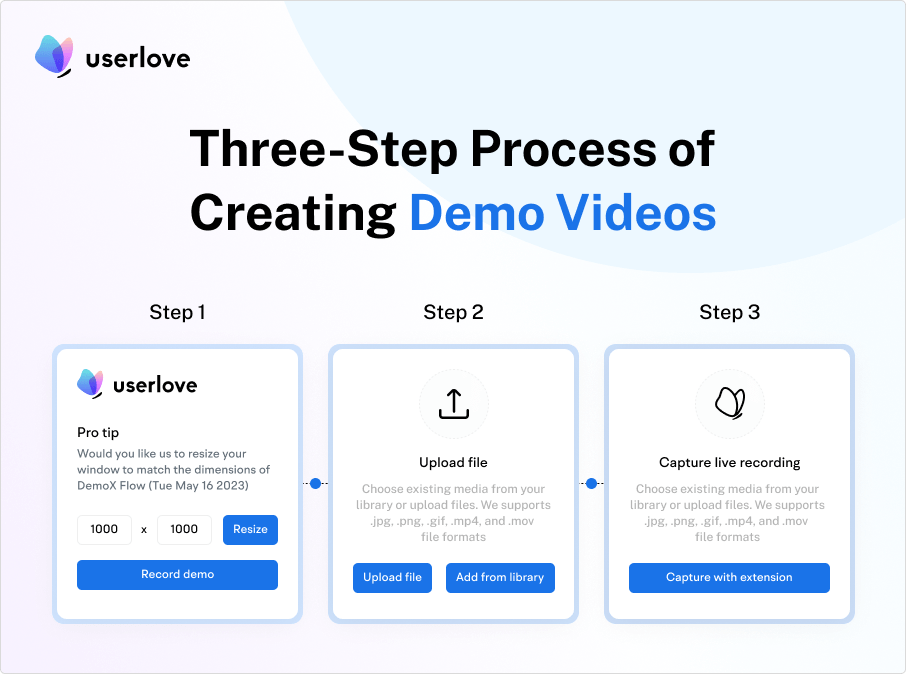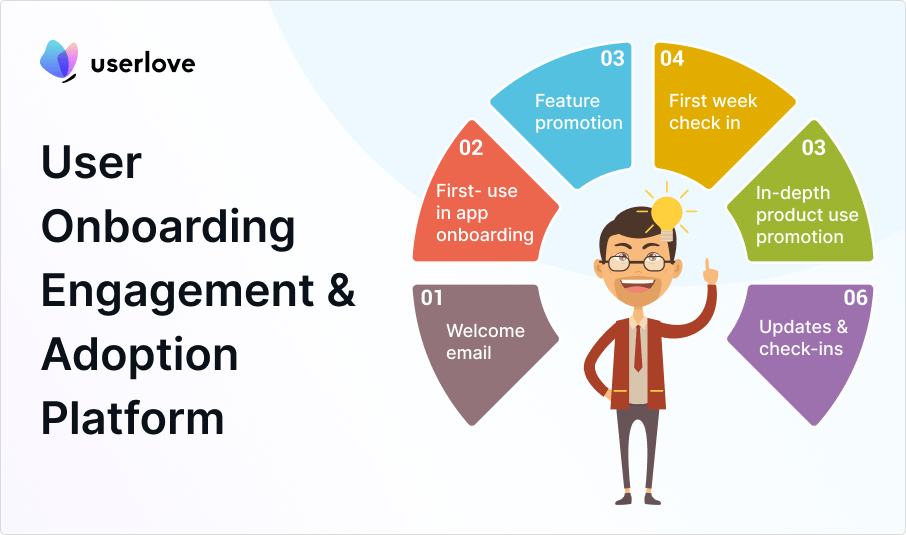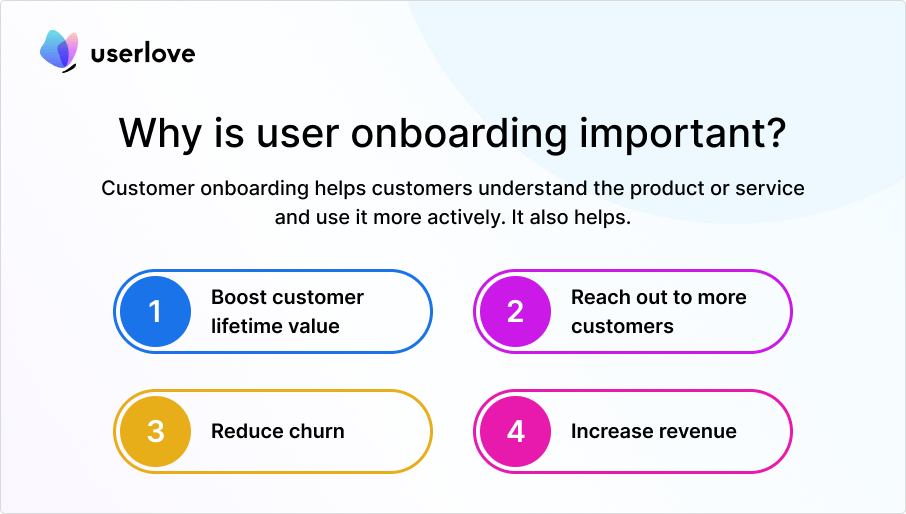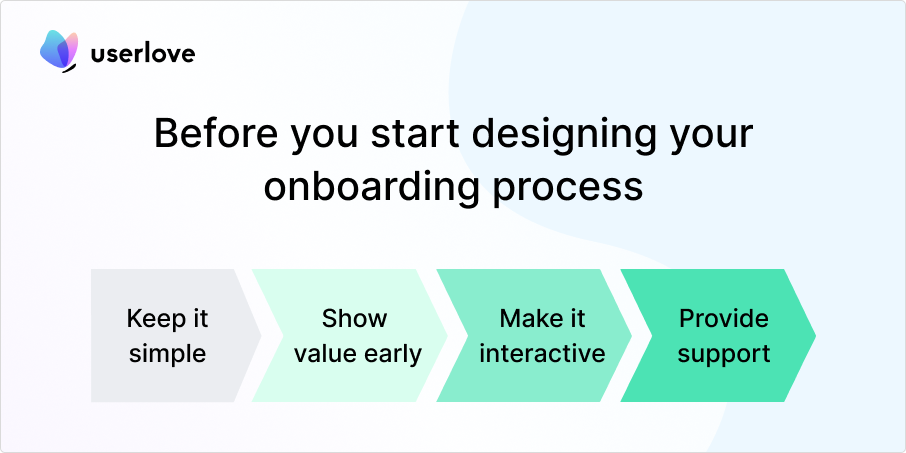- ProductsUserloveUserlove simplifies user onboarding, boosts engagement and accelerates adoption without requiring any coding skills.FEATURESSegmentationOptimizing user engagement through precise segmentation.Tooltip & HotspotHighlight key areas and provide specific information.TemplatesReady to use professional templates for quick start.ThemesCreate fantastic, personalized experiences that work well with the user interface of your product.EventsGenerate visualizations of data and events without coding.
- Use Cases
- ResourcesRESOURCES
- Pricing
- Contact Us
Onboarding 101
What is user onboarding? Learn “Why, What, Where, When” you need user experience platform.
What is user onboarding?
User onboarding is the process of introducing new users to your product and helping them discover the value of your product. This involves guiding them through the in-app experience, as well as providing helpful emails, educational content, videos and even a community for support. While the specifics of onboarding may vary from product to product, the ultimate goal is always the same: to make it easy and quick for users to understand what your product can do for them.
The process of onboarding can lead to various realizations for users, such as discovering a new feature or seeing how the product can solve a problem for them. These realizations may differ depending on the user’s unique role or needs.
What is the importance of user onboarding?
The importance of user onboarding cannot be overstated in today’s digital world. With the changing preferences of prospective buyers and the increasing competition, it’s crucial to provide a seamless and personalized onboarding experience to your users.
According to a study, over 90% of prospective buyers prefer to self-educate about a product rather than talk to the sales team. In-app onboarding can help meet this demand by providing users with a guided experience to help them understand how to use your product effectively. By doing so, you can increase user engagement and shorten the time it takes for them to see the value of your product.
Additionally, users have higher expectations when it comes to in-app personalization and instant gratification. Providing a personalized and engaging onboarding experience can help you meet these expectations and create a positive user experience. In fact, according to Salesforce, over 2/3 of businesses have switched vendors for a more consumer-like experience.
With more competition comes more options for your prospects and customers. Unfortunately, this has also resulted in all-time lows in short-term retention. Only one out of every five new users you acquire will still be around after eight weeks, on average. However, a well-designed onboarding experience can help combat this issue.
In summary, user onboarding is a critical aspect of any product strategy, and neglecting it can lead to significant losses in user engagement, retention, and revenue. By providing a personalized and engaging onboarding experience, you can create a positive first impression, increase user adoption, and ultimately, drive long-term growth for your business.
Why first time user onboarding experience is extremely important?
The first-time user onboarding experience is incredibly important because it can significantly affect short-term retention rates. Research suggests that between 40% and 60% of users who sign up for a product or service do not come back after their first interaction. Therefore, it is crucial to provide an exceptional onboarding experience that helps users understand the value of the product as soon as possible. Failing to do so can result in losing a significant portion of potential customers who do not have a solid reason to come back.
On the other hand, a great first-time user experience can create a positive impression that leads to repeat usage and a strong desire to explore the full potential of the product. The first-time user experience is a critical touchpoint that can make or break a user’s relationship with your product. If the onboarding process is exceptional and delivers value, users are more likely to become loyal and come back.
However, if users do not see the value of the product and have no compelling reason to come back, they are likely to lose interest and never return. Therefore, investing in user onboarding is a smart strategy that can help more users enjoy the value of your product and encourage them to return.
Before you start designing your onboarding process
Before you start designing your onboarding process, it’s essential to understand your users. What are their needs and goals? What problems are they trying to solve with your app? By understanding your users, you can create an onboarding process that is tailored to their needs, making it easier for them to discover the value of your app.
Keep it simple
Simplicity is key to a successful onboarding experience. Users should be able to understand the core features of your app quickly and easily. Avoid overwhelming them with too much information at once. Instead, break down the onboarding process into bite-sized steps, making it easier for them to follow along.
Show value early
Users want to know what’s in it for them. Show the value of your app early in the onboarding process. Highlight its core features and how they can help users solve their problems. This will give them a reason to continue using your app.
Make it interactive
An interactive product tour can significantly improve your user onboarding experience. By incorporating screenshots or videos, you can visually guide users through the app, showcasing how to perform specific tasks and navigate your app. This interactive approach can reduce confusion and frustration, allowing users to complete the onboarding process with ease.
Provide support
Even with an excellent onboarding experience, users may still have questions or encounter issues. Make sure you provide adequate support, such as a help center or chatbot, to help them find answers to their questions quickly.
By following these tips, you can create an exceptional onboarding experience for your SaaS app users, helping them quickly discover its value and increasing the likelihood of their long-term engagement with your product.
User onboarding tips and tricks
User onboarding is a critical process that can make or break your product’s success. However, there are common user onboarding mistakes that you need to avoid to ensure a smooth onboarding process for your users. Here are some tips and tricks to help you improve your user onboarding process:
Do user research first: Before implementing any user onboarding process, it’s essential to understand your users. You need to know their needs, goals, motivations, and messages that resonate with them. This insight will help you prioritize the right kind of message and establish user flows that best fit a customer’s journey.
Personalize the user onboarding experience: Each user might have a different path to purchase, so personalizing the user onboarding experience can really help you increase conversions. Tailoring the right product to their specific needs will help guide them to see the value product quickly.
Be clear about the “Aha” moment: Be super clear about what the “Aha” moment is, as this is the moment when new users experience the value of your product for the first time. The quicker you can get users to that moment, the more likely they are to stay around and adopt your product.
Don’t overwhelm users with too many options: Avoid overwhelming users by providing bite-size and digestible portions of information. Focus on teaching users one step at a time, each step readily increasing in complexity and difficulty.
Communicate the value of your product enough: Users need to hear over and over again how your product can help them achieve their goals. Use clear and compelling copy and content that shows up on product tours, checklists, and other onboarding elements to motivate users and make it clear how your product can help them.
Show, don’t tell: Avoid using bloated copy without showing it. Use visuals such as images, GIFs, and videos to help users better understand how to use your app. This can help reduce confusion and frustration, making it easier for them to complete the onboarding process. Personal videos humanize the experience and imply someone is personally involved in that user’s success.

